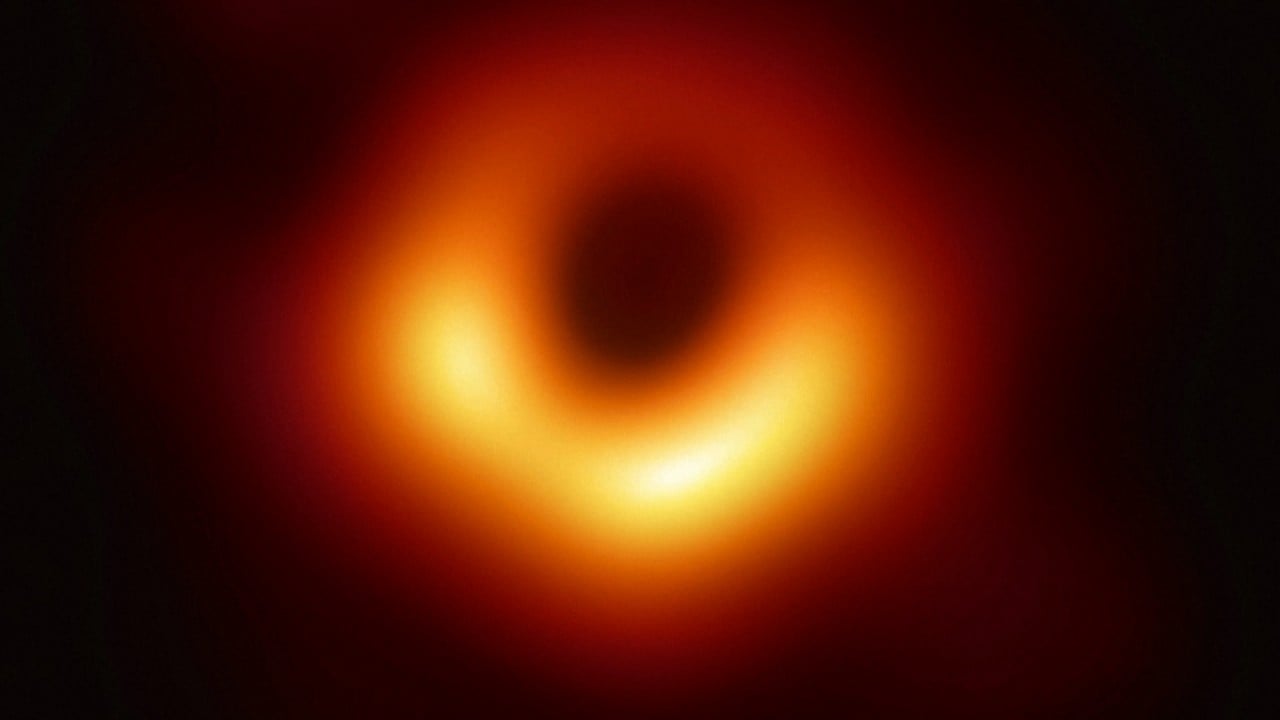They said the presence of a bubble-like structure – about 10 million times larger than our solar system – could explain how the high-energy gamma rays originated within the Milky Way, contrary to previous theories about their origins.
“This is the first cosmic ray super accelerator to be identified,” corresponding author Cao Chen, a professor at the Institute of High Energy Physics of the Chinese Academy of Sciences, told the official Xinhua news agency.
Cosmic rays are charged particles that move through space at approximately the speed of light. Although they were discovered more than 100 years ago, scientists are still not sure how the rays that reach Earth are formed and where they originate.
A new map of the Milky Way developed by Chinese scientists challenges theories of cosmic radiation
A new map of the Milky Way developed by Chinese scientists challenges theories of cosmic radiation
Previous energy spectra of cosmic rays showed an inflection point at an energy level of 1 peta electron volt (PeV) – called the “knee” because of its shape in the graphs.
Cao told Sichuan News Network that cosmic rays with energy below 1 PeV are thought to originate from within the Milky Way, while rays with energy higher than this point are thought to originate from outside our galaxy.
However, in 2020, Lasso detected very high-energy photons generated by cosmic rays with an energy of more than 1 PeV originating from Cygnus. The latest paper details how these rays could have formed.
The researchers found that the bubble-like structure in the constellation's star-forming region — called Cygnus
At the center of the bubble, the team identified a massive star cluster called Cygnus OB2 that contains many hot young stars, some with surface temperatures of more than 35,000 degrees Celsius — which may be a cosmic ray superaccelerator.
According to the paper, the bubble's structure and energy spectrum are “reasonably reproduced by assuming the presence of a particle accelerator in the core.”
A Chinese observatory discovers cosmic light that may rewrite the laws of physics
A Chinese observatory discovers cosmic light that may rewrite the laws of physics
The cosmic ray accelerator is capable of pumping cosmic rays into interstellar space with energies of 10 to 25 PeV, which collide with interstellar gas to produce the observed photons with energies of 1 PeV and above.
Cao told Sichuan News Network that the stars in the cluster have a radiation intensity that is “100 to a million times greater than the radiation intensity of the Sun.” Material blown off the surfaces of stars by radiation pressure creates high-speed winds that collide with the interstellar media – forming a particle accelerator.
“After the accelerator is formed, the microscopic particles dominated by protons are accelerated to extremely high energies, which are the cosmic rays we observe on Earth,” Cao said.
The researchers found that the gases surrounding the bubble structure are related to the intensity of gamma rays generated by the acceleration of high-energy particles in interstellar space.
“A strong assumption is that every cosmic ray source in our Galaxy has such a bubble or halo of cosmic rays,” they wrote in the paper.
Cao told Sichuan News Network that the propagation speed of cosmic rays was much slower than expected – 100 times lower than previously thought – enabling researchers to observe the bubble.
“As the observation time increases, Lasso is expected to detect more cosmic ray super accelerators,” he said in the Xinhua report. Cao added that he hopes further discoveries will “solve the century-old mystery of the origin of cosmic rays.”
The findings have “extremely relevant consequences for our description of the transport of cosmic rays in the galaxy,” said Elena Amato, an astrophysicist from the Italian National Institute of Astrophysics.

“Beer aficionado. Gamer. Alcohol fanatic. Evil food trailblazer. Avid bacon maven.”

